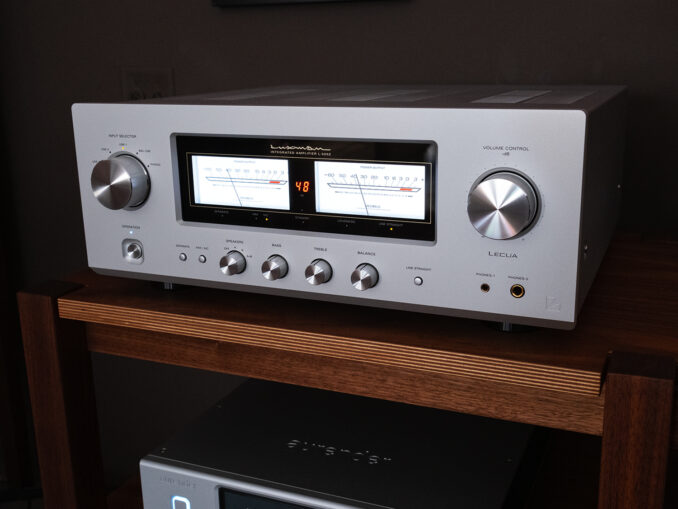
Imagine it’s another sleepless night and you’re scrolling through cable stations well into the thousands and you come across a TV Evangelist espousing the dangers of hifi lust.
In this scenario, I can easily picture the Reverend T. Vangelist using a Luxman amp as the perfect prop, the perfect embodiment of a bit of lustworthy hifi kit. Can I get an amen!

Luxman’s company history dates back to 1925 and along the way from then to now they’ve left a trail of classic hifi gear decade after decade. And I’ve not been shy about my attraction to their style but oddly enough the L-505Z is the first review of a Luxman product I’ve written in these pages. And in many ways, it’s a perfect start as the L-505Z checks off all of my Lustman boxes including the most obvious—it’s an integrated amplifier, and I love a good integrated amplifier, with a MC/MM phono stage, tone and balance controls plus loudness, and classic good looks meters and all. Who doesn’t love meters?

But what makes the Luxman L-505Z Integrated Amplifier truly an object of desire is how it makes the music it amplifies sound. Style and substance. With 100 Watts of bipolar parallel push-pull power (into 8 Ohms, 150W into 4) it can drive any sensible load with authority and I say that with some sense of authority as I paired the L-505Z with the impressive Dynaudio Contour Legacy Limited Edition loudspeakers (review), the thankfully not limited Gauder Akustik Capello 100 Loudspeakers (more info), and the Barn resident DeVore Fidelity O/96 (review). The company recommends 200 hours of break-in and even if you don’t believe in it, you’ll get there as a matter of course.

The Luxman L-505Z has plenty to offer connectivity wise with the aforementioned MM/MC Phono input, 4 line level single-ended RCA inputs, a balanced XLR input, PRE Out, Main In, Trigger and Control connections, two sets of speaker binding posts for connecting two pair of speakers, and an IEC inlet for your power cable of choice.

The L-505Z houses a number of upgrades from the L-505uXII it replaced including an improved moving magnet/moving coil phono preamp, 12-volt triggers, parallel headphone output jacks including a “Pentaconn” balanced type, and 7-segment white LED volume level-VU meter display that can be turned on and off via the included remote.
There’s also lots of proprietary Luxman tech inside, products of their 100-year history including the LECUA (Luxman Electronically Controlled Ultimate Attenuator) equipped volume and balance controls and the Luxman Integrated Feedback Engine System (LIFES1.0) equipped power amp stage which the company describes as offering “improvements in distortion detection, regulation, and thermal stability. The result is a rare combination of exceptionally low distortion and the natural sound quality associated with ‘non-feedback’ type circuits.”
Here’s a bit more from Luxman:
The L-505Z combines high power and superb linearity, thanks to bipolar transistors in triple paralleled Darlington push-pull configuration. The highly regulated power supply boasts a massive, 540 VA EI-type transformer and an array of four new-generation type 10,000 µF filter capacitors. The Class AB output stage is conservatively rated at 100W+100W at 8 ohms and 150W+150W at 4 ohms. The result is exceptional sound quality with an abundance of energy.
While I cannot state with any degree of certainty how much the LIFES1.0 or the LECUA volume control play in the sound quality of the music I’ve been listening to through the L-505Z these past 3+ months, I can tell you that what I heard through the Dynaudio Contour Legacy, Gauder Akustik Capello 100 and DeVore Fidelity O/96 was in fact exceptional and powerful with just the right amount of sweet richness and energy to make music come to life in Barn. The kind of reproduction you simply ease into, effortlessly sliding past the mechanics into the music’s flow for hours, weeks, and months on end.
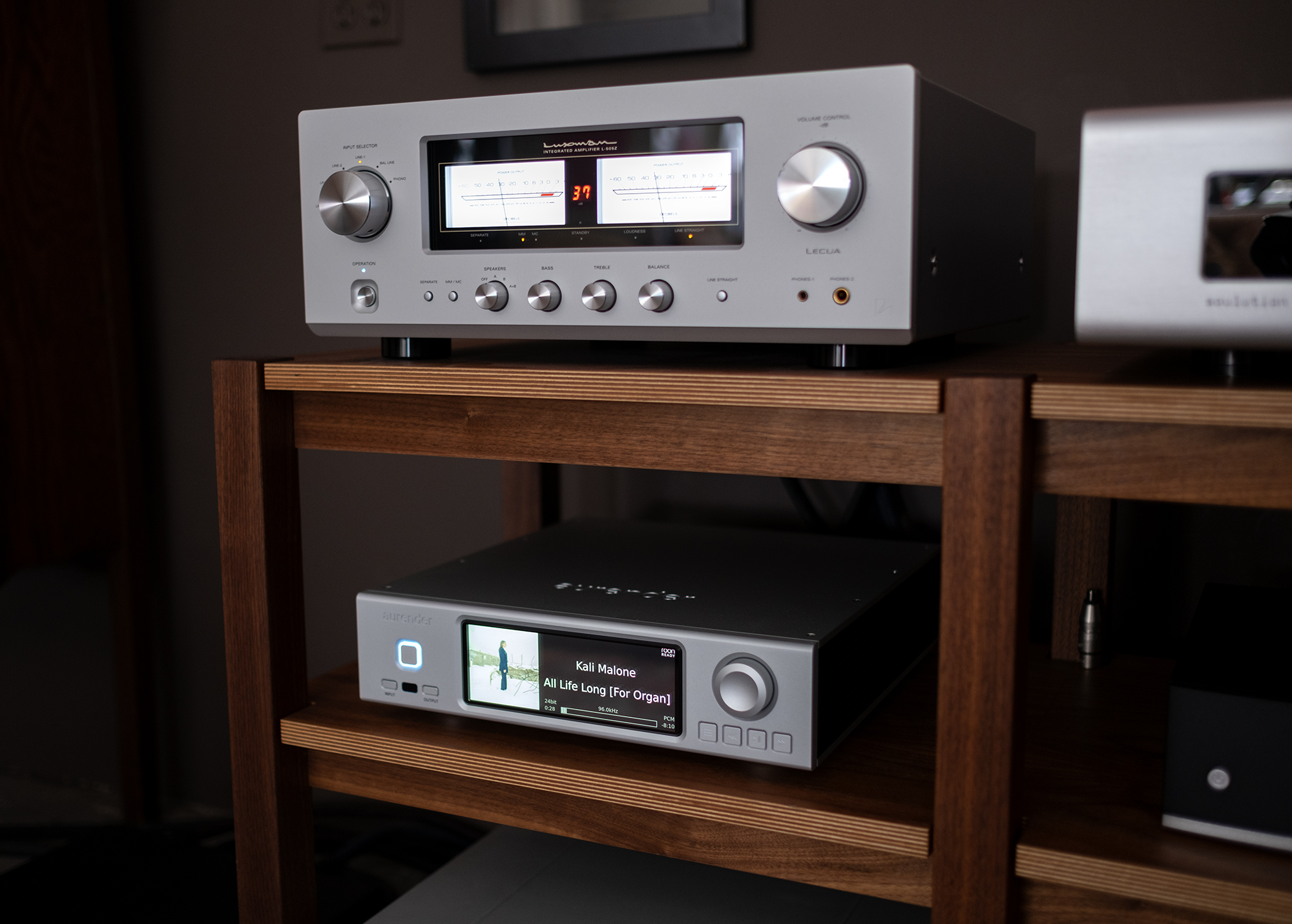
The Luxman also got to play with the Aurender A1000 (more info) acting as streamer and DAC and also paired with the Barn resident Mola Mola Tambaqui (review), with my Michell Gyro SE/Sorane SA1.2/EMT HSD 006 analog front end spinning the vinyl (there’s no “s” needed). All cabling came courtesy of AudioQuest and included their ThunderBird RCA and XLR interconnects, Carbon USB cable, and Robin Hood speaker cables, and Monsoon and NRG-Z3 power cables all plugged into an AQ PowerQuest PQ707 with everything except the speakers sitting on my lovely walnut Box Furniture MD3S Modular Double-wide 3-shelf rack. (see full system and Barn details)
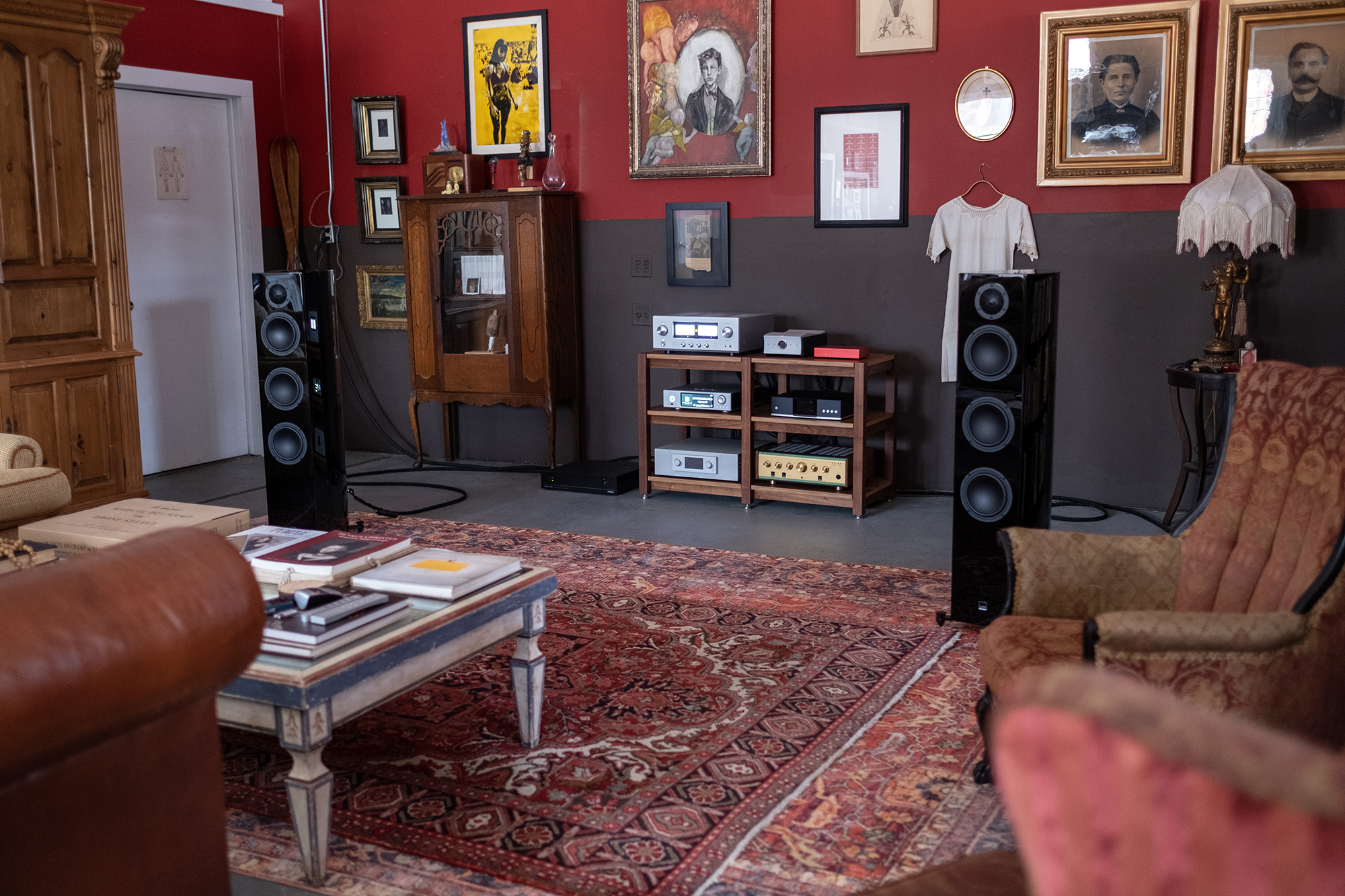
I’ve come to find that the most difficult reviews to write are written about products that seem/sound largely transparent. Describing the sound of not much of anything other than pure, sweet music is hardly a review. Right? Thankfully hifi components and loudspeakers don’t exist in a vacuum so how we put a system together, which partners we pick, and where the whole thing plays music is where all the color comes in. While I can appreciate excellent test bench performance as much as the next guy, thinking that measured performance in isolation is what you’ll get when you put that near perfectly measuring thing into a system and into a room meant for living is like believing that since your well heated home is a comfy 70 degrees you don’t need a coat when going out into a blizzard. The real world is where things happen outside of our control. I know, it can be scary.
When an amplifier offers this kind of see-through sound, and the Luxman L-505Z certainly does, the question isn’t which speaker pairing you prefer, rather the question becomes which speaker do you like best. A kind of ideal scenario, imo.
Nala Sinephro’s Endlessness, released on WARP Records back in September, is a beautiful complex tapestry in sound, a kind of sonic balm for the ears and soul. Harp, piano, synths, sax, flugelhorn, trumpet, percussion, drums and more from a wild cast of players including James Mollison, Black Midi’s Morgan Simpson, Nubya Garcia, Natcyet Wakili from Sons of Kemet, Sheila Maurice-Gray, Lyle Barton, and Wonky Logic weave these pieces that are rooted in jazz with ambient textures and flow. With the Luxman driving the Gauder Capello 100s, this ethereal music filled the Barn’s A-Side with sounds well free from the speakers yet feeling firmly rooted in the real. The Capello 100s have an uncanny presence in terms of the way they reproduce dynamics that feels so solid and tight you might mistake them for a percussive instrument and the Luxman controlled and extolled these impressive speaker’s virtues with effortless, clean, clear power.
This is the kind of reproduction, also thanks to the Aurender A1000, that moves beyond sound quality concerns by making music and all of its parts feel palpably real. Production as opposed to reproduction and the listening experience reminded me that I should have included this lovely record as one of my favorites from last year. That’s the problem with lists, they’re either too short or too long.
Have I mentioned I cannot stop listening to Jolie Holland’s Haunted Mountain? Well, I can’t stop and many a morning found my brain silently singing lyrics, mostly from opener “2,000 Miles”:
And I’ll feel you in songs I’m singing
I’ll see you in every beautiful thing
The bird on the wire
And the moon on the wane
Sometimes my mouth joins in. And I do know I’ve mentioned this before, that when music reproduction reaches a certain level of engagement I feel a nearly uncontrollable desire to sing along and I was belting out bits and pieces of lyrics from Haunted Mountain like a drunken tourist in a karaoke bar with the Aurender/Luxman/Gauder Akustik combo doing the machine duties.
From the liner notes:
Working closely with her talented collaborators, Adam Brisbin and Justin Veloso, Jolie recorded the core of the album as a trio before adding layers of intriguing overdubs. Ever the innovator, she employed some unconventional recording techniques, like capturing the sound of knuckles rapping on the piano and incorporating the sounds of cicadas in album closer “What It’s Worth.” The intriguing atmosphere of “Feet On The Ground” was created by running a drum machine through an amp into a vast barn, every sonic experiment a testament to her willingness to push the boundaries of her art.
Sounds including chunky crunchy electric guitar, slap happy drums, and what sounds like a good old Telecaster twang add color and character to Holland’s roadhouse vocalizing with everything chugging along like a freight train rolling down a hill running just askew of the proper tracks. And I gave this record a good listen through both the Dynaudios and DeVores and the Luxman drove both with purity and commanding control as if the only thing in between me and this infectious music was air.
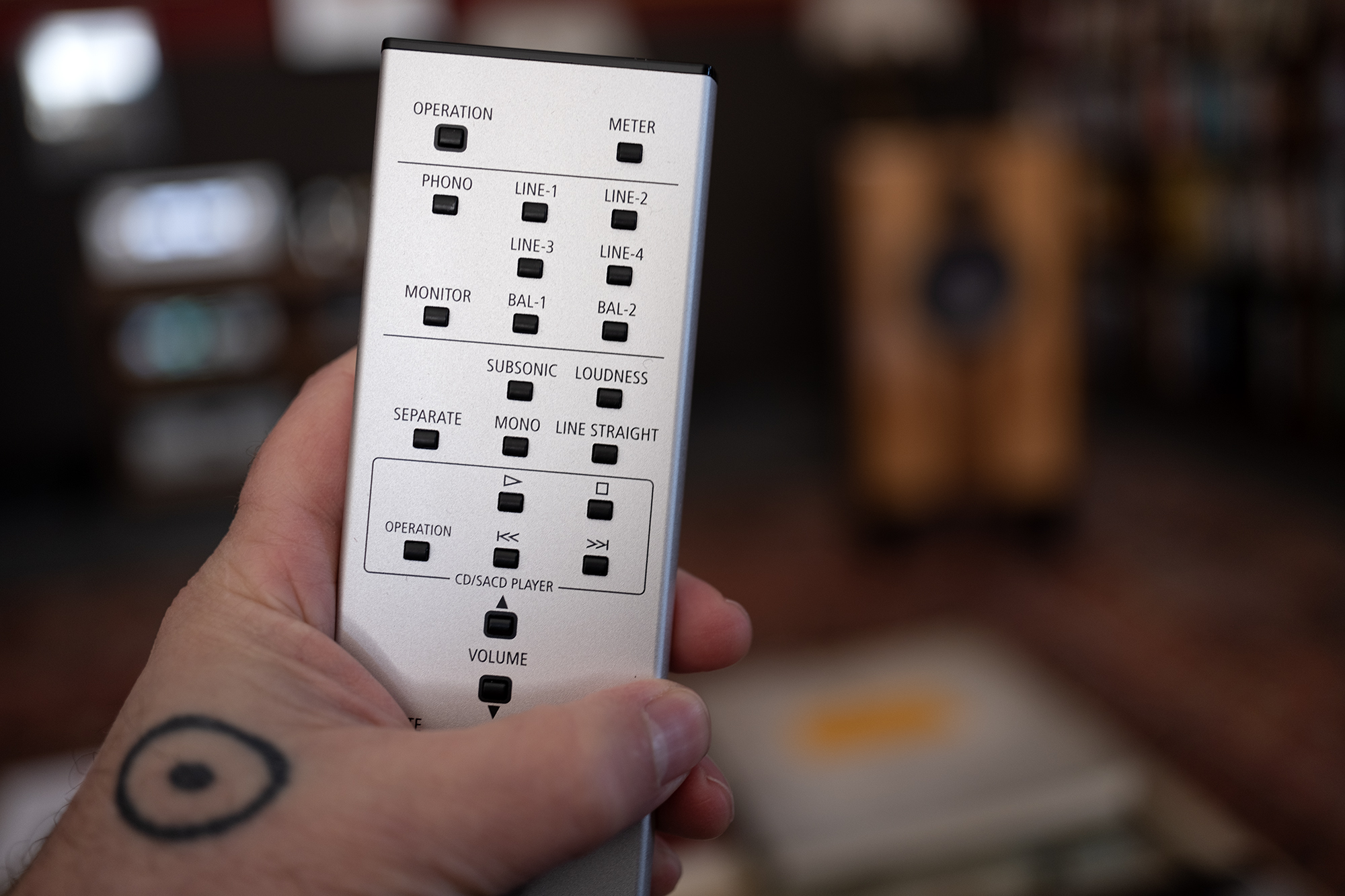
While I don’t mind having tone controls, I’ve never felt the need to use ‘em but YMMV for this nice-to-have feature. On the other hand, a Loudness control, which is only accessible on the included remote, can come in handy when listening at low levels through speakers that require more than a bit of juice to really sing. I did engage the loudness feature with the Gauders when listening at very low levels and appreciated the boost that made music feel slightly richer and fuller. And for those concerned with sonic degradation and purity of signal path, the button on the L-505Z’s front panel and remote marked “Line Straight” bypasses the balance, loudness, and tone controls. The “Separate” button also on the front panel and remote “Feeds external signals from the MAIN IN terminal on the rear panel to the main-amplifier section” for bypassing the L-505Z’s preamplifer section. For the entire rundown of functions, I recommend a read of the extensive L-505Z manual.
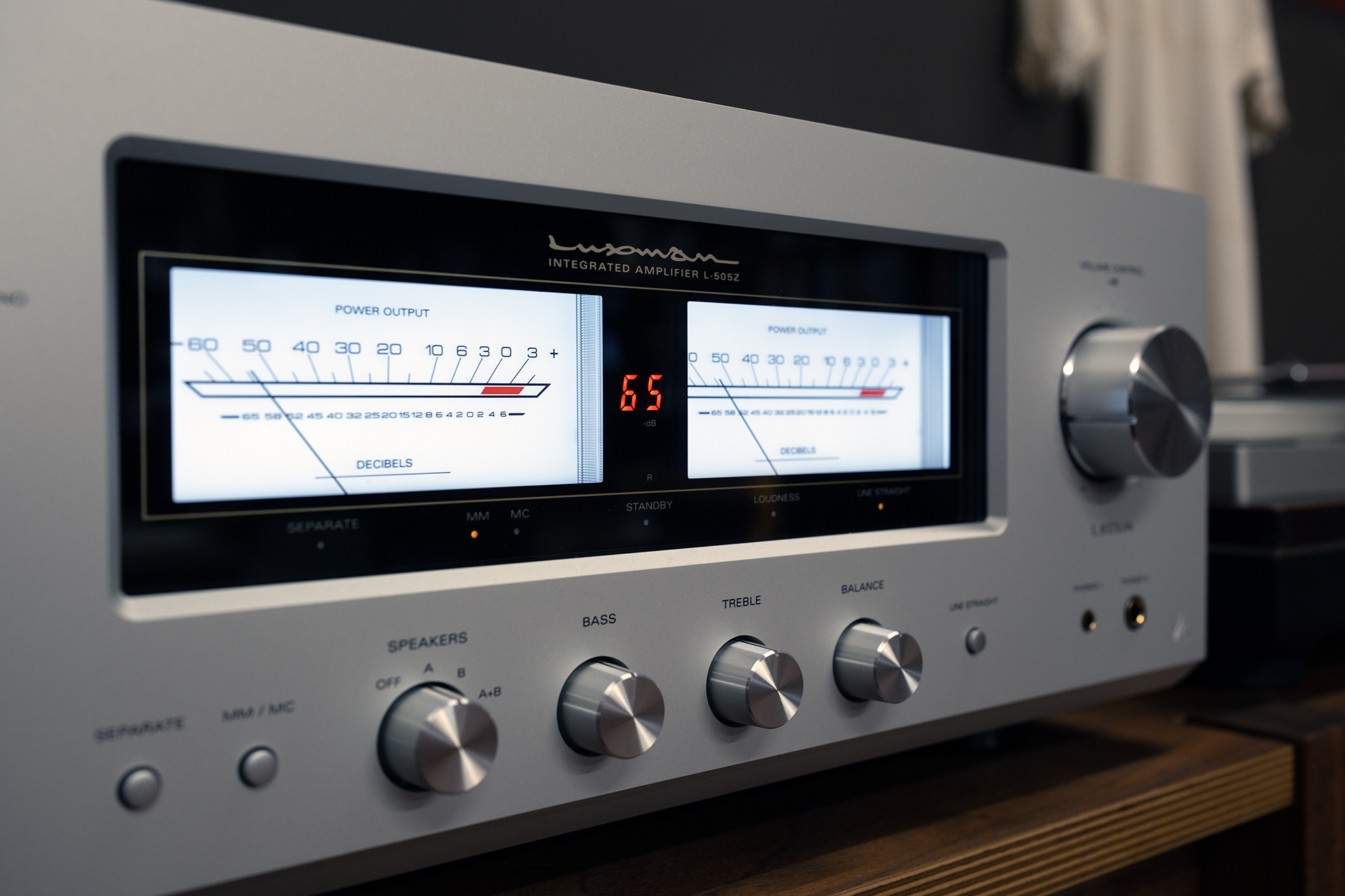
The most obvious comparison, albeit not apples to apples, is with the recently reviewed Atoll SDA300 integrated amp (review). The Atoll integrated costs $495 less than the Luxman and offers 150 Watts of Class A/B power (into 8 Ohms) but the more important difference is the SDA300 is clearly aimed at the digital streaming buyer whereas the L-505Z’s extra functional appeal woos the vinyl-loving shopper. Not apples to apples. That being said, and it’s important to keep in mind, in terms of sound quality alone the Atoll integrated offers a more full bodied sound, a richness and weight compared to the Luxman’s greater resolving powers which makes music feel more refined, more agile. However, these differences are slight and subtle, greatly outweighed, imo, by function (digital vs analog), company appeal, looks ’n fit & feel. In other words, I’m dicing up two very accomplished integrated amplifiers and my best guess is prospective buyers know which they’re more interested in by looking at the photos and reading the spec sheets. There are no wrong answers.
Another interesting foil is the Unison Unico 90 Integrated Amp (review), that costs $496 less than the Luxman. The Unison amp is a hybrid design, tube pre/solid state output, also offering 100 Watts of output power but the Unison is just an integrated so you have to add your own phono stage and/or streaming to match the L-505Z and SDA300’s functionality (respectively). With that in mind, the integrated from Italy offers a more robust sound, a juicer and more ripe presentation as compared to Luxman’s cooler by comparison refined transparency. Or to put it another way, the Unison amp offers a touch more of its own character which may come in handy when looking for a mate with loudspeakers that feel a little lifeless.
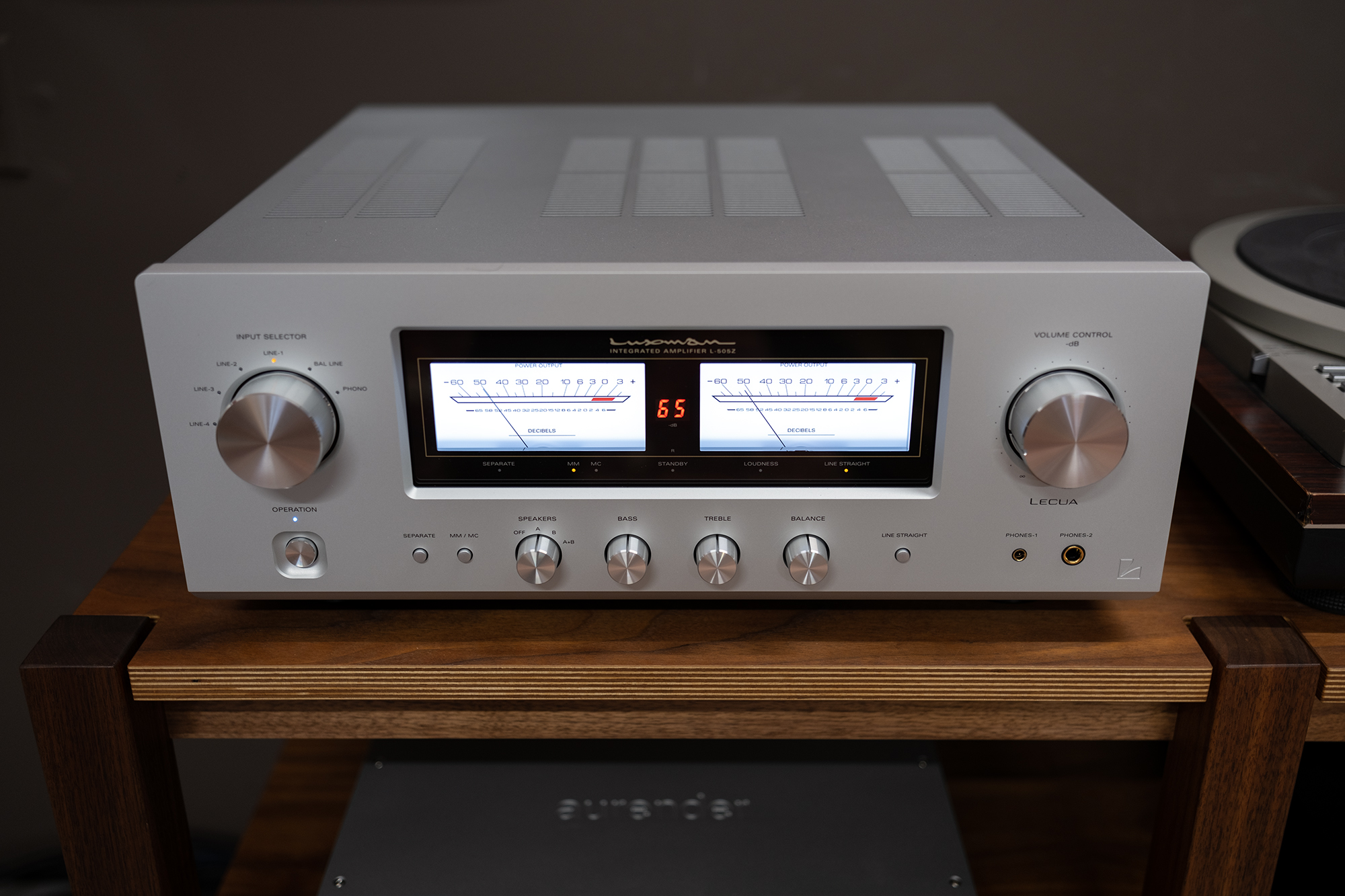
Japan, France, Italy. Again, not a stinker in the bunch and the thoughtful shopper will take the functional and aesthetic differences of these fine, yet different, integrated amplifiers into account along with sound quality. My tastes put the Luxman in the lead when it comes to an amp I want to live with and look at every day.
I brought my Michell ‘table over to the Barn’s B-Side to give the Luxman’s MC Phono stage a drive. Among the LPs I played through, I’ll highlight Big Thief’s double LP Dragon New Warm Mountain I Believe In You because it’s a sweetheart of a record filled with lovely, mainly acoustic, sounds and I could listen to Adrianne Lenker sing forever and never grow tired.
But first a word on included options—we all know that if we spend more money on separates, we may get better sound quality. But that’s a funny way to look at included options because an integrated amplifier, especially an integrated amp with a phono stage, offer a one box convenient solution which is a main reason to buy one. Sure, you could get a pair of monoblock amps, a preamp, step up and a phono stage along with the requisite interconnects and power cables (and a place to house them) but that’s like saying it’s better to buy three houses, one for summer, one for winter, and one for the rest of the time without addressing the cost and convenience of living in one place. All to say I find it silly to compare an included phono stage to a stand alone so I’m not going to do that here.

Dragon New Warm Mountain… reminds me of the Band, in that we all live together and wear each other’s clothes even if they’re not really clean level of comfort and companionship that makes the resultant music feel warm and inviting. Like a hug. Acoustic guitar (6 and 12 string), prepared acoustic guitar, brush guitar, nylon-string guitar, electric guitar, fiddle, jaw harp, flute and vocals filled the Barn with their distinct voices and down home energy. Color me convinced.
From Dragon‘s liner notes:
The attempt to capture something deeper, wider, and full of mystery, points to the inherent spirit of Big Thief. Traces of this open-hearted, non-dogmatic faith can be felt through previous albums, but here on Dragon New Warm Mountain I Believe In You lives the strongest testament to its existence.
And here’s the great news about the L-505Z’s phono stage when paired with the Michell/Sorane/EMT front end—it gets out of the way and offers a rich, nuanced, and full-bodied performance that let’s the EMT’s super hero energy shine through. One of the things I love about the EMT HSD 006 cartridge (review) is its ability to light up music with live-like energy and this quality remained in tact through the Luxman, along with convincing weight, that is in part a product of the Sorane SA1.2 tonearm, and a superb sense of timing and flow that comes with the Michell ‘table. Nice.
According to my way of hearing, there’s nothing not to like about the L-505Z’s phono stage. Just plenty to love as it doesn’t detract from your analog front end’s way with your records.
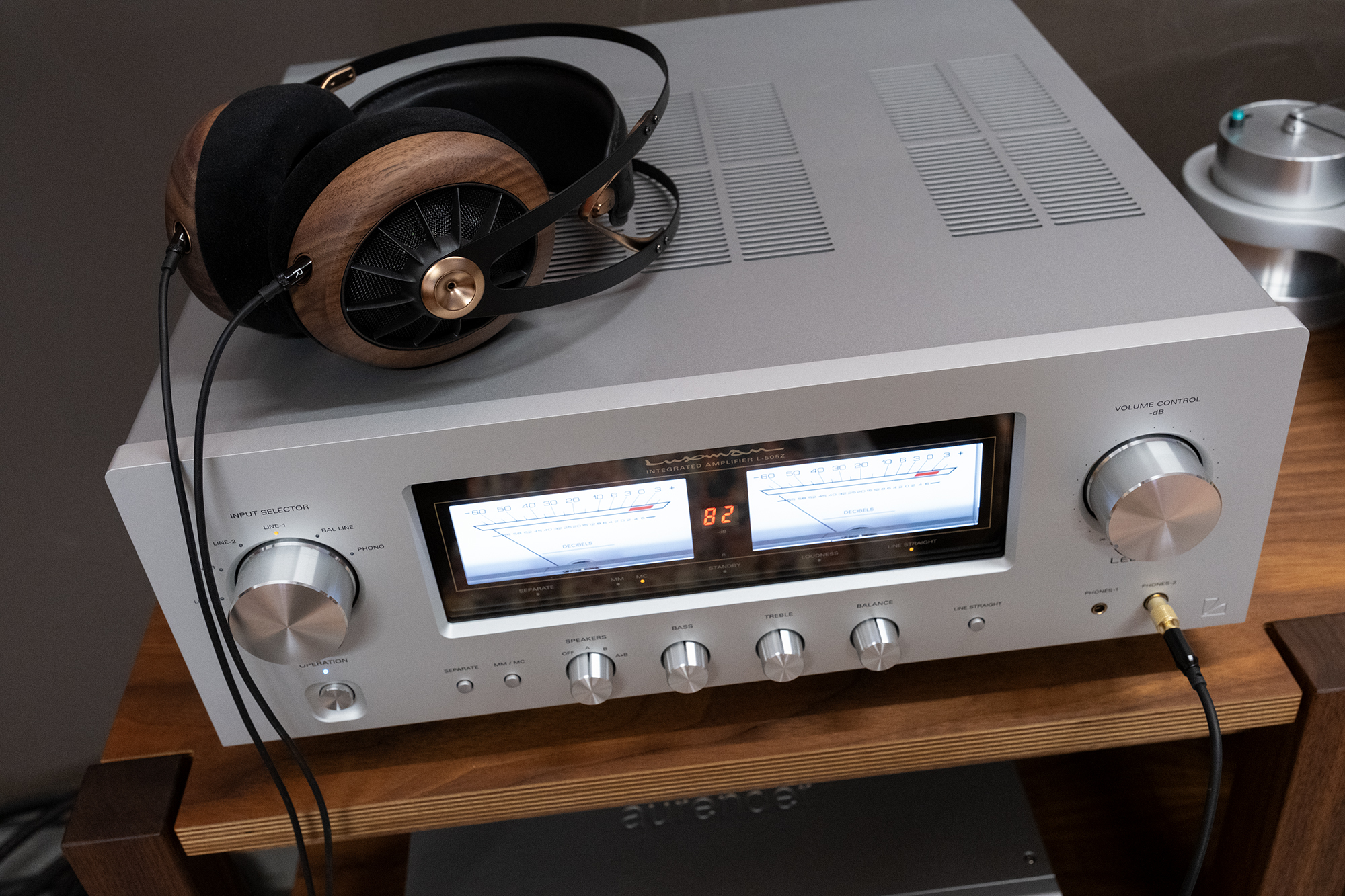
I think we all know how I feel about headphones—I enjoy listening through ‘em on occasion but prefer my music to unfold in room. Or Barn. That said, the Barn resident Meze Audio 109 Pro Headphones make a very convincing argument that always sways me to settle in to their many charms and the L-505Z made for an equally convincing partner.
While we’re talking about convincing partners, the Aurender A1000 as streamer and DAC made for a great mate in every way—price, performance, and looks. I’ll dig into the Aurender’s many strengths in that review but if you’re looking to build an everything system—amplification, digital/streaming and analog—while keeping the box count low, the Aurender/Luxman combo is a real winner.
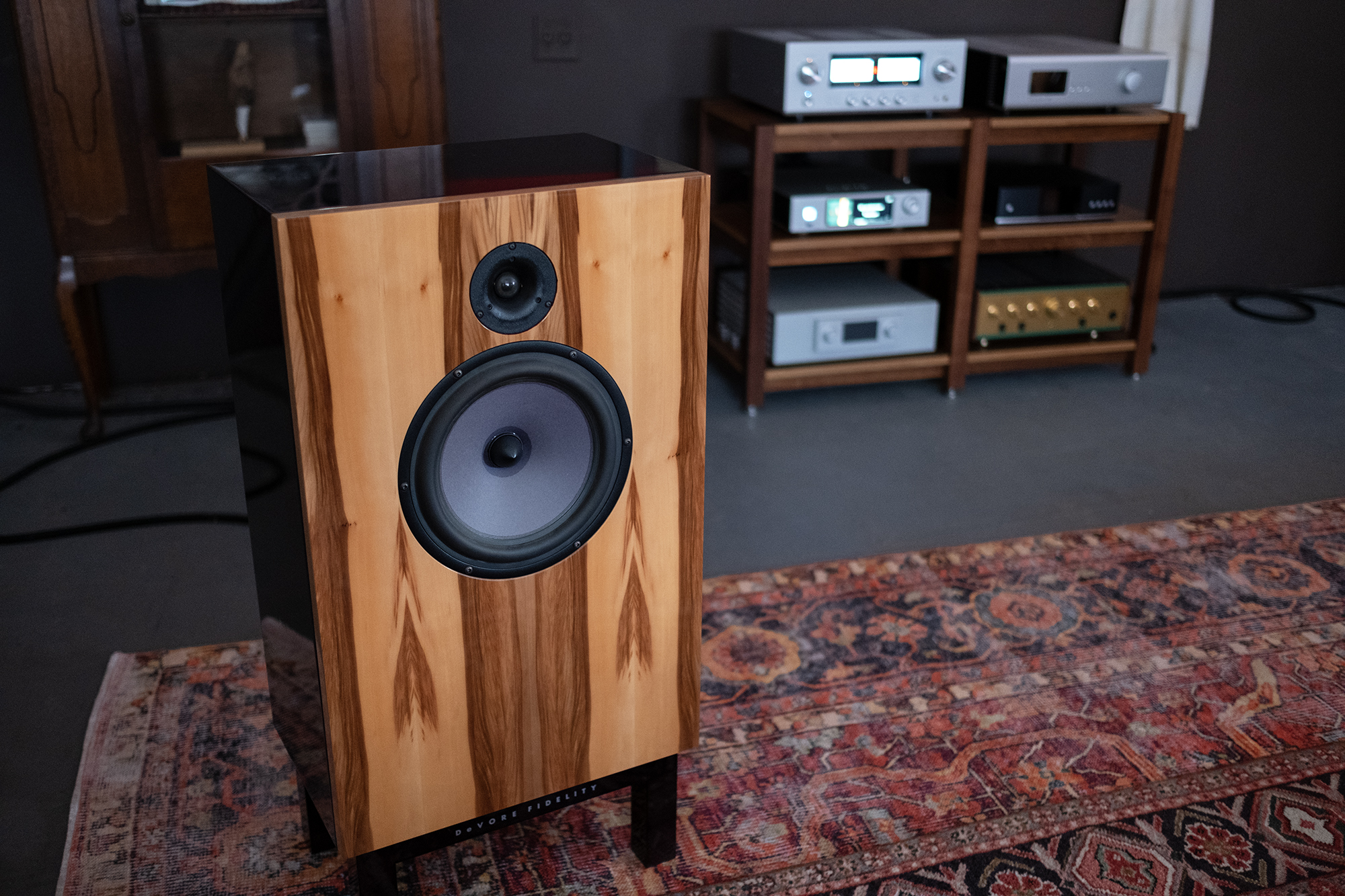
For the last few weeks of my time with the Luxman, I let it drive the delight out of my DeVores, which was time spent enjoying much more than critical listening. The fact of the matter is the L-505Z leaves no room for doubt when it comes to its ability to turn recorded music into pure musical engagement. Perhaps its greatest strength is its rich, refined purity that allows all of the other elements that go into music making on a hifi sing through with their own voice(s). I’ll also share that sitting back late into the night with the warm glow of those dancing meters enriched the mood that went well beyond like.
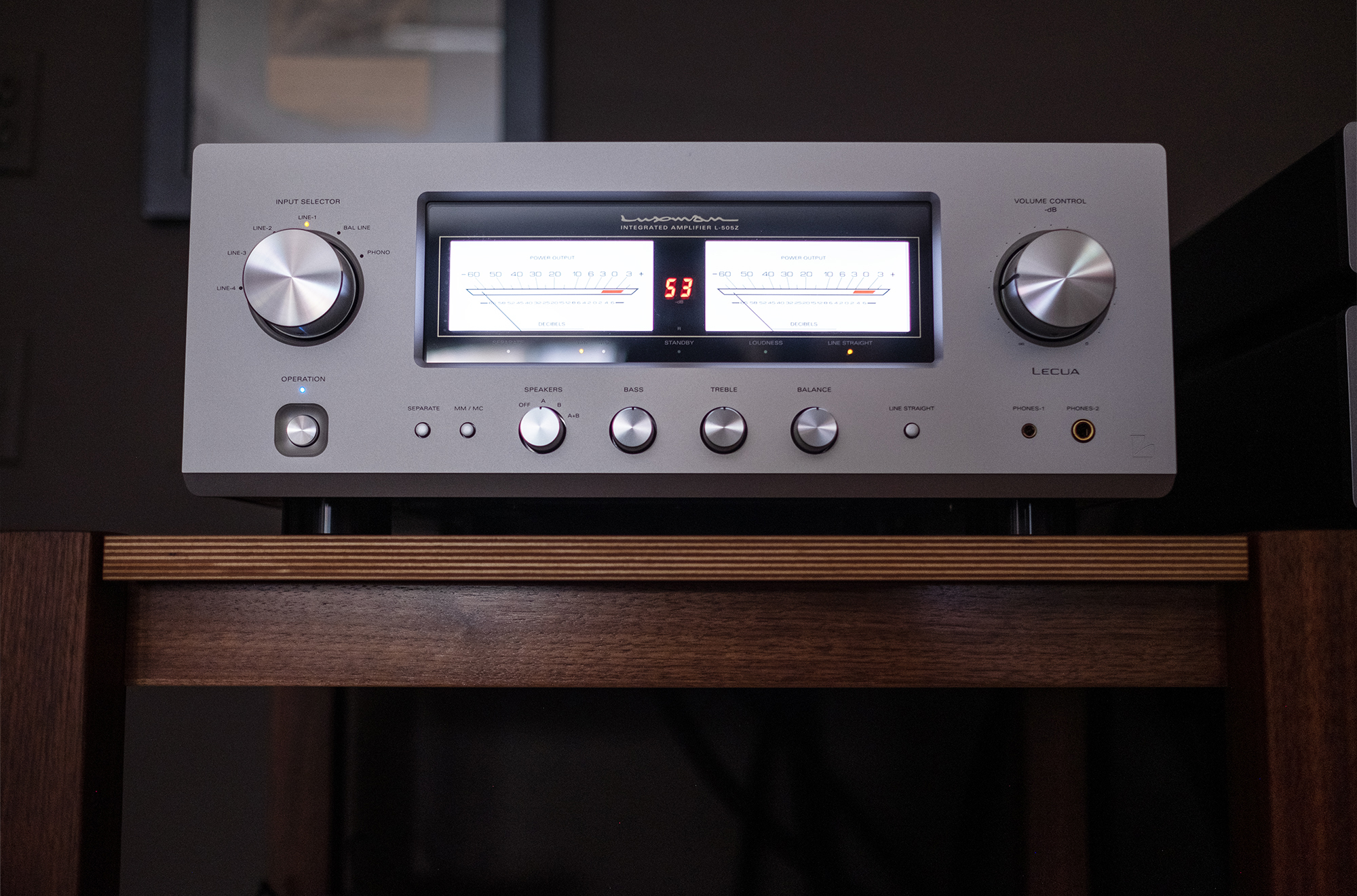
I get most excited by hifi gear that offers complete appeal—functionality, looks, build quality, company history, price, and performance. I’m also a huge fan of integrated amps and appreciate when they also include a nice phono stage. In these terms, the Luxman L-505Z is among the most exciting pieces of hifi kit I’ve had the real pleasure of getting to know.
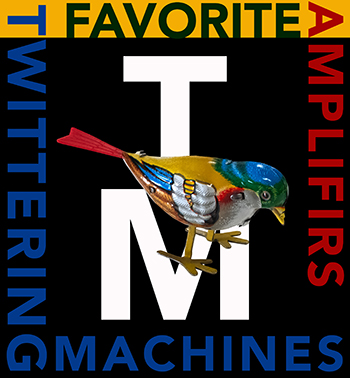
Luxman L-505Z Integrated Amplifier
Price:$5995
Company Website: Luxman America
L-505Z Specifications
Rated output: 100W + 100W (8Ω), 150W + 150W (4Ω)
Input sensitivity/input impedance:
PHONO (MM): 2.5mV/47kΩ
PHONO (MC): 0.3mV/100Ω
LINE: 180mV/47kΩ
BAL.LINE: 180mV/55kΩ
MAIN IN: 1V/47kΩ
Output voltage: PRE OUT: 1V
Frequency response: PHONO: 20Hz to 20kHz (±0.5dB) | LINE: 20Hz to 100kHz (within -3dB)
Total harmonic distortion: 0.009% or less (8Ω, 1kHz) | 0.09% or less (8Ω, 20Hz to 20kHz)
S/N ratio (IHF-A):
PHONO (MM): 87dB or more
PHONO (MC): 70dB or more
LINE: 104dB or more
Volume adjustment: LECUA
Amplification feedback circuit: LIFES 1.0
Output configuration: Bipolar parallel push-pull
Damping factor: 200
Max. amount of tone control:
BASS: ±8dB at 100Hz
TREBLE: ±8dB at 10kHz
Power supply: 230V~(50Hz) / 115V~(60Hz)
Power consumption: 330W | 90W (under no signal), 0.5W (at standby)
External dimensions: 440(W) x 178(H) x 454(D) mm | front side knob of 20mm and rear side terminal of 27mm included in depth
Net weight: 22.5kg (main unit)
Accessories: Remote control (RA-17A) | Power cable
Speaker terminal Supported Y-lug terminal dimension:
Width of part a: 15mm or less
Width of part b: 8mm or more
* Connection may not be performed depending on the shape of the Y-lug terminal.
* Slide the phase selector switch to the INVERT position to make the balanced input terminals pin No 2 to change to HOT, and No. 3 to COLD.
* Meter lighting, monaural, subsonic, and loudness can be switched with the remote control.
* Specifications and appearance are subject to change without notice.
* The products listed in this catalog do not include line cables. Please purchase cables separately.
